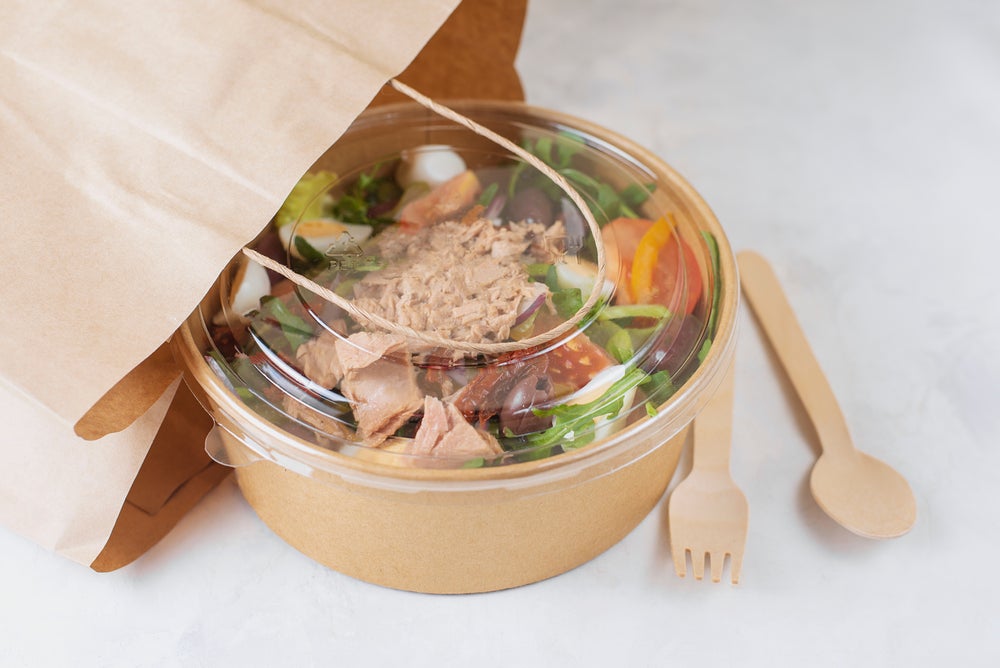In recognition of ‘Nature & Land Use Day’ at the COP26 summit in November, 45 nation-states agreed to reform domestic policies in favour of a shift towards more sustainable agricultural systems. The move marks the continuation of a relatively new conversation about food systems.
We’ve long been aware of the climate crisis – but how well do we understand the impact of our global food system on biodiversity loss, deforestation and drought?
According to the ‘National Food Strategy’, an independent review published earlier this year in the UK, the global food system is the second-biggest contributor to climate change. It accounts for 26% of all global greenhouse gas (GHG) emissions, with food loss and waste alone contributing a mammoth 8%.
Creating a global food system that supports a healthy planet will take tangible action from governments, companies and society combined. Packaging can be part of the solution, keeping food safe and nutritious for longer – but there’s a catch. After all, packaging can have a negative environmental impact, producing waste, expanding landfills and increasing GHG emissions.
Turning the food system around means rethinking how we create and use packaging and processing solutions. There are three key areas where incremental changes would help to decarbonize the food system: food waste; the supply chain and water usage.
Keeping food out of the bin
Reducing food waste is vital for combatting climate change. When we throw away food, it’s not just the food being wasted – it’s resources too.

US Tariffs are shifting - will you react or anticipate?
Don’t let policy changes catch you off guard. Stay proactive with real-time data and expert analysis.
By GlobalDataBeyond the farm gate, the biggest contributors to food waste are households, which are responsible for 70% of all waste. In the UK alone, households throw away 4.5m tonnes of food each year, according to a report by WRAP. Packaging options with a long shelf life can help address this problem, offering consumers packages that retain the longevity of food by providing convenience, portion control, a barrier to moisture and oxygen and protection from physical damage.
Only sustainable packaging options can do all of this while also reducing carbon emissions. Addressing this need requires innovation pathways driven by renewability and recyclability. These are key to accelerating the shift from high carbon, fossil-based materials to low carbon, renewable ones.
Already today, the high proportion of renewable materials in Tetra Pak cartons, which contain around 70% paperboard, helps our products to achieve a lower carbon footprint than alternatives such as glass, PET or aluminium packages. Our ambition, based on our founder Dr. Ruben Rausing’s idea that “a package should save more than it costs”, is to create the world’s most sustainable food package, made entirely from renewable or recycled materials, is fully recyclable and carbon neutral.
Packaging’s role in protecting our natural environments
These materials must be sourced and processed responsibly if we are to minimise environmental as well as human and societal risk. At Tetra Pak, our participation in The Forest Stewardship Council, Aluminium Stewardship Initiative and Bonsucro schemes ensures our resourcing meets their criteria for protecting biodiversity and natural environments in a traceable, transparent way.
Of course, decarbonising the food and packaging supply chain isn’t just about the packaging materials – other components such as transport, retail and waste disposal carry carbon costs too.
Like many companies, Tetra Pak has pledged to reach net-zero GHG emissions in our operations by 2030 and in our value chain by 2050. A key step towards this is lowering energy-related emissions. Innovation in clean and efficient energy – such as adopting electric vehicles for transporting products, and sourcing 100% renewable energy across all operations – can make a weighty contribution to reducing the food supply chain’s carbon footprint.
Additionally, innovation in food processing and filling equipment can reduce water usage alongside GHG emissions. This is critical for those businesses operating in high-risk water areas, where wastewater is becoming an increasingly pressing concern.
How we can support food manufacturers
The packaging industry can work with food companies to tackle these issues – but doing so requires constant innovation. The target is challenging, not least because the current technology and infrastructure are still at an immature stage.
Packaging producers need to focus on creating solutions that use low-temperature processes, reduce water consumption and encourage the use of renewable energy sources. Developing products that enable manufacturers to adopt energy-efficient measures can also help to reduce their operating costs.
Earlier this year, we launched the Tetra Pak E3 Speed Hyper filling machine and UHT 2.0 heating portfolio for dairy manufacturers. Together, these can cut water and steam consumption by 70%. Solutions such as these are key to addressing environmental concerns while supporting food producers to feed a growing population.
But, the clock is ticking: According to the World Resources Institute, the demand for food will be 56% higher in 2050 than it was in 2010.
Urgent action is required on all sides to address the need for more food at a lower cost to our planet. Finding solutions faster can be done through better collaboration. Collectively, we must step up investment and innovation to turn our food system into one that protects food, people and planet.





